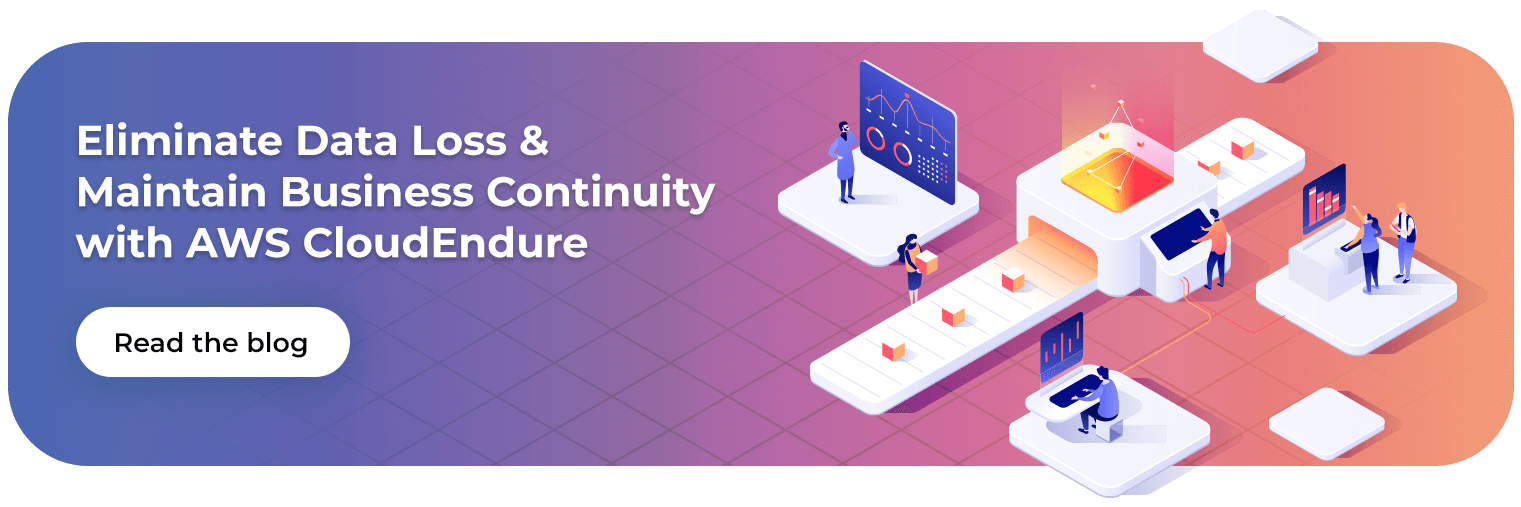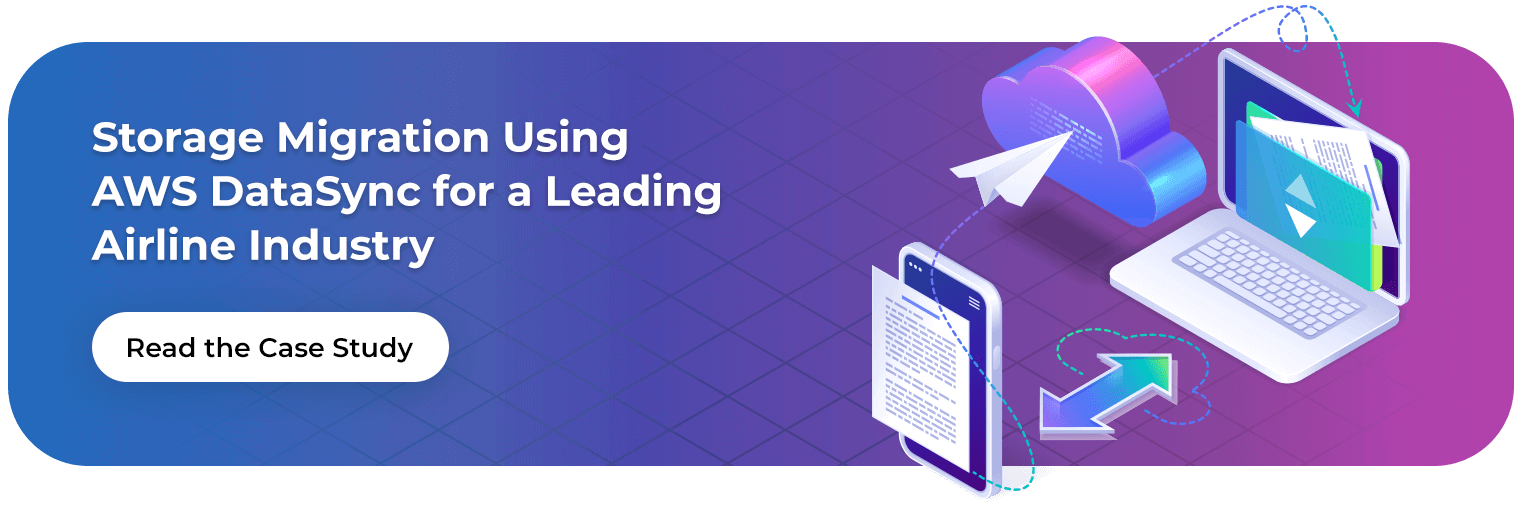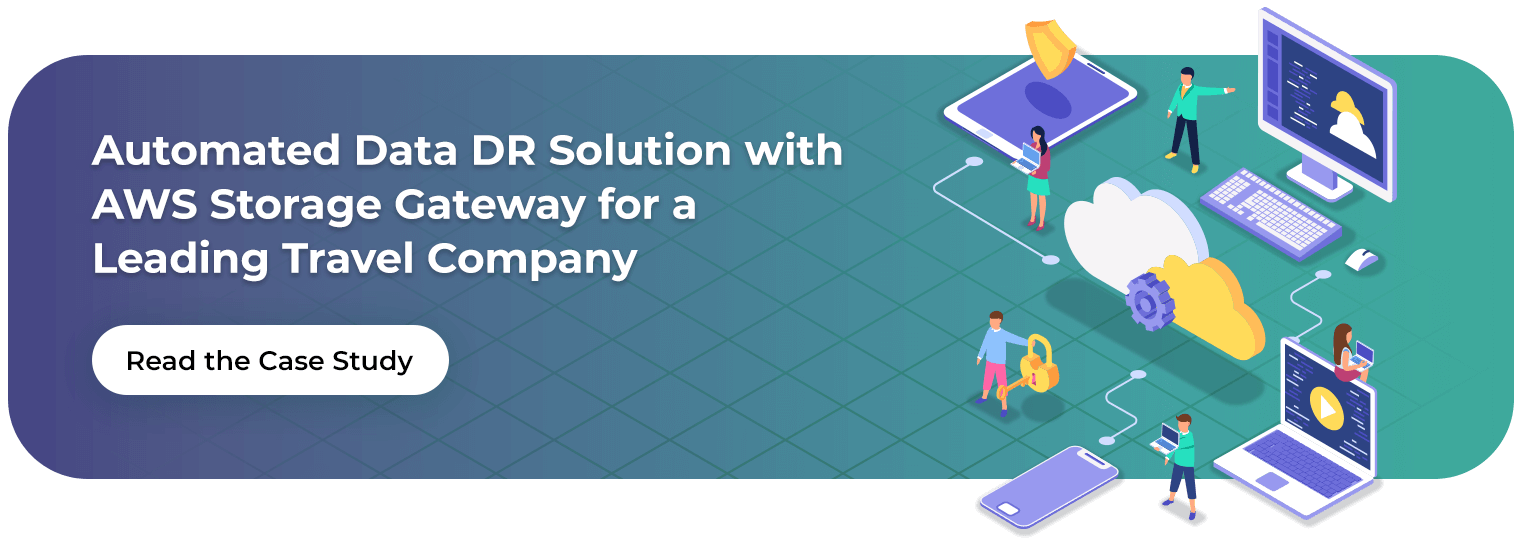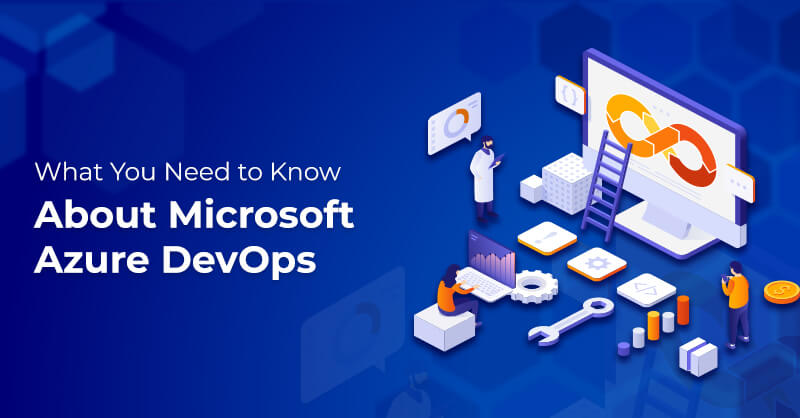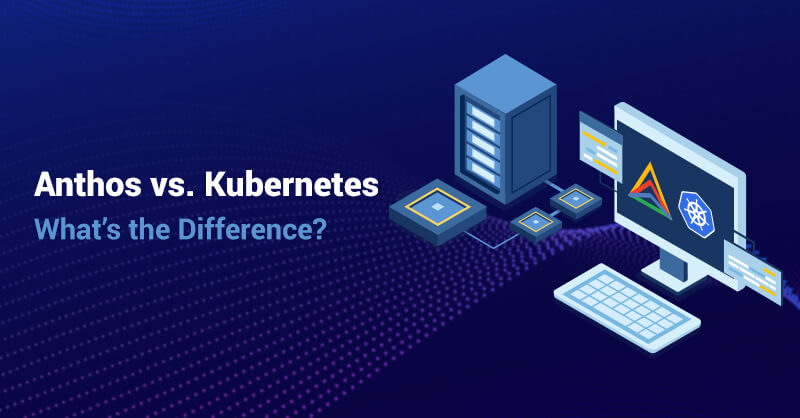Build the Perfect Contingency Plan with AWS Elastic Disaster Recovery (AWS DRS)
Written by Priya George
Content WriterDisaster Recovery is major reason enterprises migrate workloads and applications to private or public cloud platforms. Disaster Recovery (DR) is best understood as the efforts undertaken by a company to ensure the recovery of its IT infrastructure in the event of an unforeseen catastrophe. For example, with the help of a disaster recovery plan, companies can store and recover company data in case of data loss through ransomware attacks or human error leading to application or hardware/software failure.
To provide an in-house disaster recovery solution, they launched the AWS Elastic Disaster Recovery service in AWS re: Invent 2021. With AWS Elastic Disaster Recovery, companies can:
- Instantly recover business operations after unexpected events that result in data loss.
- Build resilience and avoid compliance risks by setting AWS as the recovery site for company workloads.
- Back up AWS-native apps from an alternate AWS region, increase application resilience and ensure instant app availability.
AWS Elastic Disaster Recovery attempts to minimize data loss and downtime by replicating the source servers running on-prem, other cloud platforms, or Amazon EC2 instances from different AWS regions. Furthermore, it converts the servers so the applications can be run on AWS. The diagram below demonstrates a single process needed for the reliable recovery of servers across infrastructure and OS.
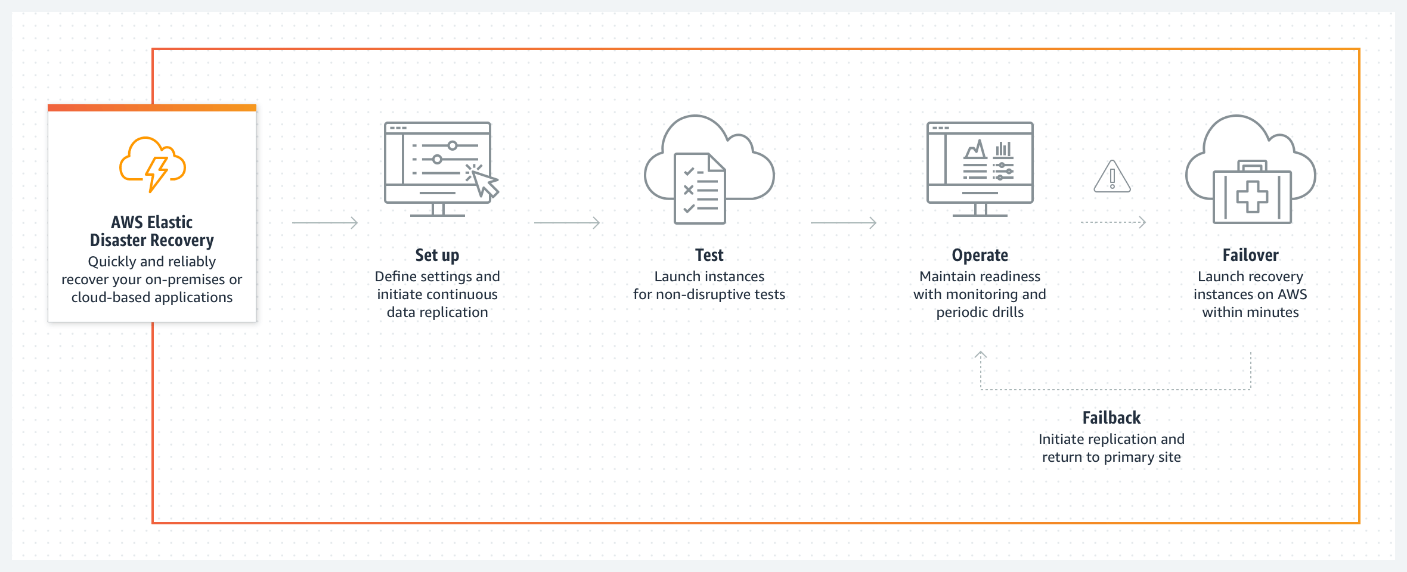
A Detailed Understanding of Amazon Elastic Disaster Recovery
AWS Elastic Disaster Recovery possesses three unique features which help it stand apart from the competition, including CloudEndure Disaster recovery:
- With continuous data replication, enterprises can choose whether the servers are recovered at the point-in-time state or earlier version. This feature enables a recovery point objective (RPO) in minutes.
- With user-friendly drills, companies can prepare for the worst and test the AWS recovery site for their backup servers.
- In a disaster, you can recover the application servers with a simple recovery option on AWS from physical infrastructure, VMware vSphere, Microsoft Hyper-V, and other cloud infrastructure that runs on supported Windows and Linux operating system versions.
Most importantly, AWS Elastic Disaster Recovery is a highly cost-effective service, as companies are not billed for idle hardware resources but only based on actual recovery or drills run. AWS Elastic Disaster Recovery is also easily accessible via the AWS Console, which thus allows seamless transactions between other AWS-related services such as AWS CloudTrail, AWS IAM, and AWS CloudWatch. This allows developers also to monitor, manage access and avoid risks to their resources. There are three primary use cases where AWS Elastic Disaster Recovery service comes in handy:
1. On-Prem to Cloud: Due to the vast difference in platforms, this hybrid approach requires planning out the disaster recovery objectives, recovery time, and recovery point objectives (RPOs). With the VMs located in the on-prem environment, applications are migrated to an AWS EC2 console during disasters. Additionally, with AWS DRS Mass Failback Automation Client (DRSFA), companies can ensure reliable recovery back to the source servers.
2. Cloud to AWS: In the interest of compliance or adoption of a multi-cloud strategy, companies often opt for an alternate cloud platform to act as the DR site: for instance, companies with workloads on Google Cloud might want to back up their resources on AWS. There are several steps, briefly described below, for successfully setting up a failover event with data replication of Google Cloud workloads on AWS:
This is one example of companies setting up a DR site on AWS with an alternate cloud platform having the source server. The diagram below displays the basic architecture for the DR plan for data replication of Google Cloud workloads to AWS with the help of AWS Elastic Disaster Recovery (AWS DRS).
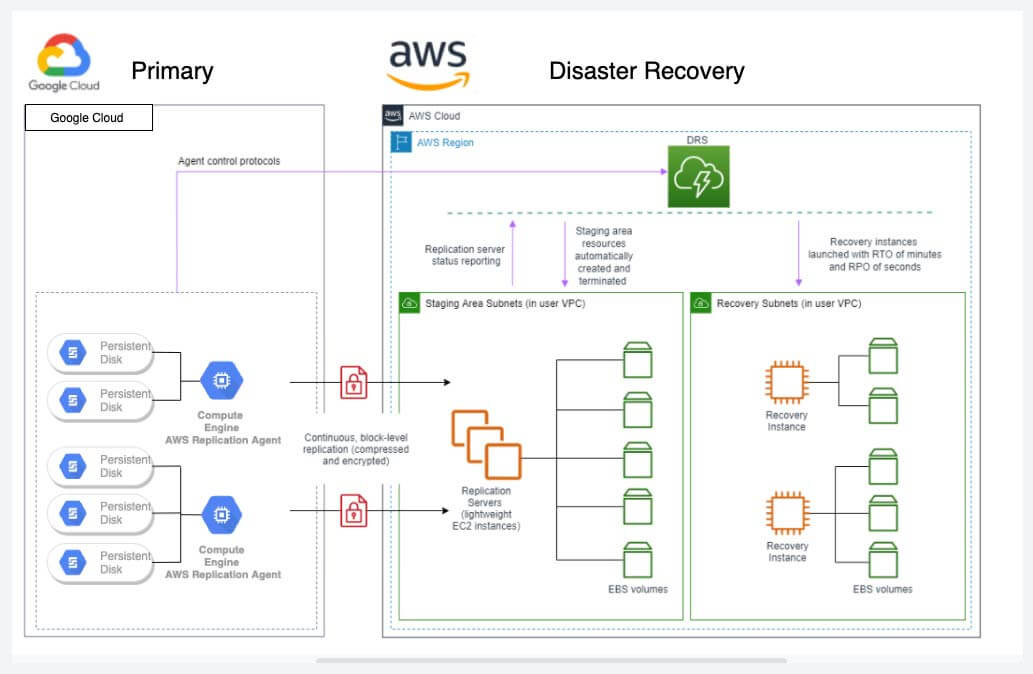
AWS to Alternate AWS Region
Transferring AWS-native applications to an alternate AWS region, as part of the DR strategy, ensures that application resilience is enhanced. However, when using AWS Region as a disaster recovery target for AWS workloads, the applications and databases must be hosted on an EC2 instance. With the help of a "Pilot Light Strategy," AWS Elastic Disaster Recovery (DRS) maintains copies of data and resources by using an Amazon VPC as the low-cost staging area and is only deployed as a recovery location when the failover event is triggered. In addition, there is a warm standby mode where a fully scaled-down, functional copy of infrastructure is always available in an AWS region. The choice between the pilot light and warm standby approach depends on your company's RPO and RTO (recovery time objective) needs.
The following diagram below displays AWS Elastic Disaster Recovery (AWS DRS) architecture to transfer AWS workloads to another AWS region.
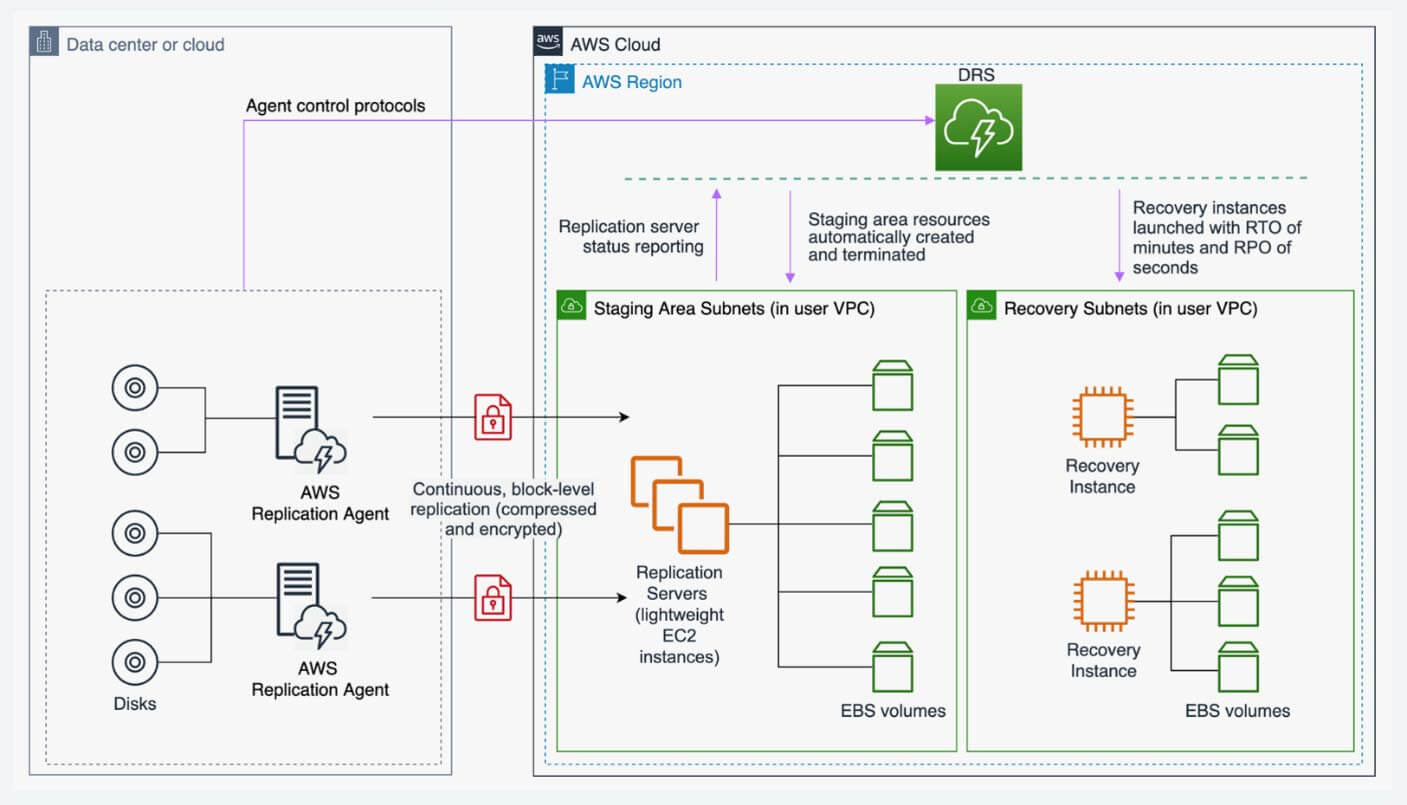
How Can Royal Cyber Help?
This blog has provided an overview of how AWS Elastic Disaster Recovery (AWS DRS) helps recover data and resources from on-prem, alternate cloud platforms, and AWS workloads. As shown, implementing a DR successfully with the help of the AWS Elastic Disaster Recovery (DRS) service is easier said than done. Companies need consultants and support services to help strategize and implement the perfect DR plan. With our AWS-certified experts, you can be guaranteed these services and more. Collaborate with our team to leverage AWS services cost-effectively and develop custom cloud-native applications and solutions that meet your business requirement.
For more information, contact us at [email protected] or visit our website at www.royalcyber.com.

